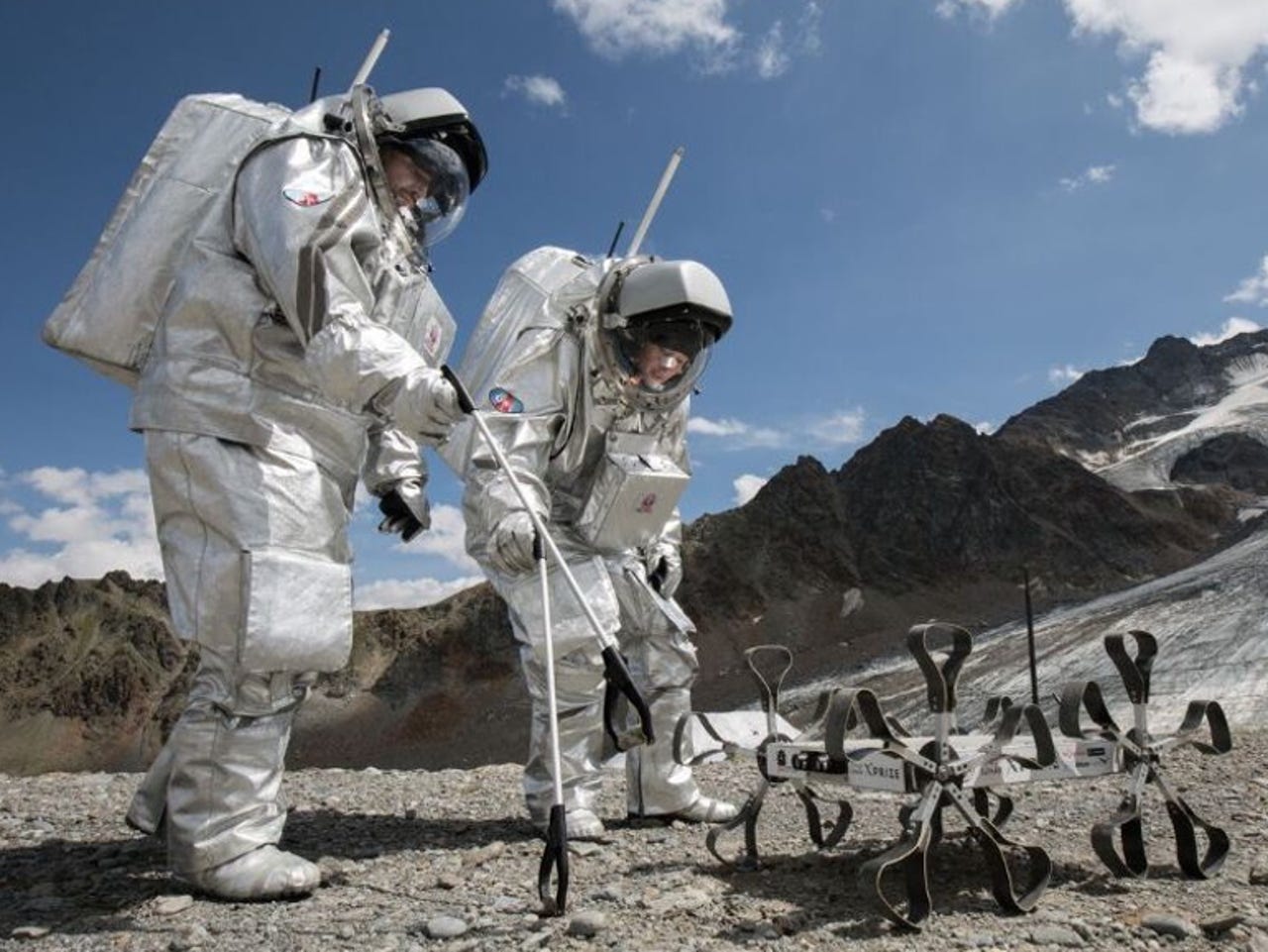Earth to Mars: This startup is trying to make IoT power packs that work in outer space


Finnish startup Tespack is working with the Austrian Space Forum on providing astronauts with advanced technology carried in solar-charged backpacks for the first manned mission to Mars.
The internet of things is meant to be a game-changer. Yet the technology still faces important physical challenges, such as distance limitations, battery life, and durability. All these issues become even more pronounced in the extreme conditions found in very hot or cold locations.
Tespack is trying to tackle some of these problems by developing solar-powered backpacks with IoT and connectivity capabilities, to take energy-generation not only to the next level, but even to another planet.
The Finnish startup, which develops mobile-energy products for use in remote areas, such as Antarctica or on Everest, recently announced a partnership with the Austrian Space Forum, carrying out fundamental research on Mars analogs.
Mars analogs are places on Earth that share certain characteristics with environments found on the red planet. The aim is to provide space scientists and astronauts with advanced technology carried in solar-charged backpacks for the first manned mission to Mars.
"For Tespack, this is a new mission, bigger than money or business. We can help you charge your phone on Everest and be safer. But being able to develop the first backpack for use off this world is pretty much something to feel proud of," Tespack CEO Mario Aguilera tells ZDNet.
"We believe that if we don't try to challenge our field, we'll never evolve. This is what we're trying to do with the wearables market."
The founder of the Finnish startup, with offices in the Netherlands and UK and a research center in Valencia, Spain, admits that the work has been largely theoretical up until this point and that his company is still studying various scenarios with the Austrian Space Forum.
Yet, the company does have a general idea of the product it wants to create: a 'smartpack' for astronauts that will not only keep their devices charged, but also possibly act as a vital-signs monitor.
"We need to design a backpack for a place that has a different type of physics. It can't be equipped with a normal zipper, because of gravity, space suits, and gloves," Aguilera says.
"Weight and UV light are also important factors to think about. So is the temperature, as lithium batteries cannot operate at very low temperatures. Hence, we have to get creative to come out with a solution able to withstand these conditions."
Aguilera believes that the potential IoT applications for the backpack are endless: "From monitoring the astronaut and the power of battery, to knowing the weight of the backpack. However, we'd like first to address the energy factor," he says.
It's been a long time since Aguilera first thought about the potential of energy generation on the move. In fact, the fundamental idea behind Tespack was born when he was much younger and served in the army in South America.
He used to go on deployments and then be obliged to return to base to recharge mobile devices, so he started to think about ways of solving that problem. Later, he moved to London and then to Finland with his Finnish wife to focus on his concept of providing mobile energy.
"People seem to be extremely focused on the efficiency of batteries, on the size of mobile phones, and the price ratio. Yet, from our perspective, the future of energy is not in batteries or how light, good, and efficient graphene could become," he says.
"The future is not having batteries. The only reason why we need them is because the existing energy sources that we have available aren't good enough to become self-sufficient to power our mobile devices constantly."
Aguilera is convinced that there are many ways of combining technologies to create a complete solution, whether they are based on kinetics, heat, wind, or solar power. He says whoever is able to lead energy generation will be able to "give a more holistic and accurate experience for IoT and wearables".
Tespack has recently filed patents for new solar-powered IoT products and is testing them in its solar R&D unit based in sunny Valencia, where summer temperatures can hit 45ºC. Unfortunately, those are not conditions typically found in Finland. The company is collaborating with Spanish government bodies and other startups in the area and has plans to expand to Africa.
"The future of energy generation looks promising and we want to be part of it," Aguilera says.
Roger Bou, director of the IoT Solutions World Congress to be held in Barcelona in October 2016, believes that IoT is a powerful force for innovation.
In fact, he is convinced that "it will not only impact on the management of connections in extreme conditions but in managing extreme situations such as fires or earthquakes. It could save lives".
Read more on space technology
- Sky and Space to launch 200 nano-satellites with Virgin Galactic
- Clearing up space junk: The system that's ready to decommission satellites before they even launch
- NASA to give Microsoft's HoloLens a spin in space
- Facebook loses Africa broadband satellite in SpaceX launch explosion
- CNET: Why did NASA send a DNA sequencer to space?
- TechRepublic: Photos: NASA's space age tech that we use every day